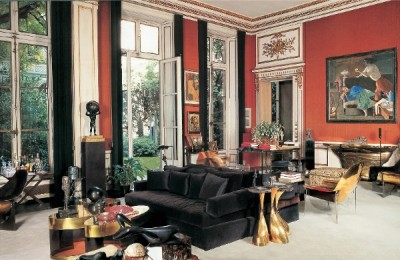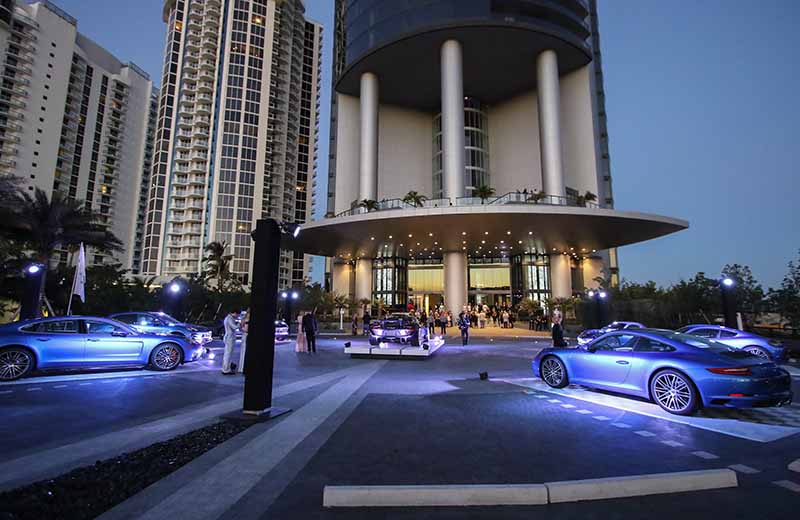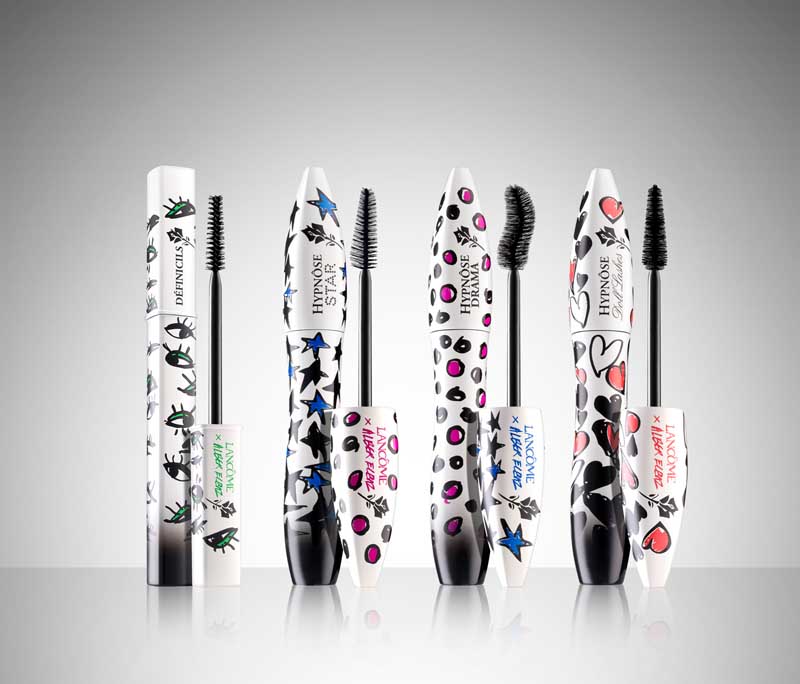 Paris Match: Henri Samuel and the Artists He Commissioned, 1968-1977
Paris Match: Henri Samuel and the Artists He Commissioned, 1968-1977
November 7 – January 31, 2015
Demisch Danant
542 West 22nd Street
New York City
NEW YORK/ — Beginning November 7, 2014, Demisch Danant will present Paris Match: Henri Samuel and the Artists He Commissioned, 1968-1977, an exhibition exploring the legendary decorator and international tastemaker’s unique engagement with French fine artists through the furniture and functional objects he commissioned in the 1970s from such figures as César, Francois Arnal, Guy de Rougemont, and Philippe Hiquily. Acclaimed as one of the first experts in mixing design genres and periods, Samuel was also one of the first to invite contemporary artists to making furnishings. His remarkable talent for unexpected juxtapositions became the keystone of “the Samuel style” and his eclectic sophistication challenged the prevailing bourgeois notion of “matching” interiors.
On view through January 31, 2015, Paris Match will present rare furnishings by these artists, most never before exhibited publicly. The exhibition is the latest in an ongoing series in which Demisch Danant is examining and exalting pathbreaking French design of the 20th century.
The period between the late 1960s and mid-1970s witnessed the emergence of a new era of design and artistic expression in France. It was an exciting moment marked by leaps of creative daring in every field, and rich with an eagerness to know and experience different mediums and forms of expression beyond the old, accepted boundaries. Artists and industrial designers formed collectives like Atelier A, and reflected a new social context characterized by experimentation; they challenged the definitions of modern design by incorporating new materials, humor, and spirit in the creation of objects of daily life. Paris Match offers a window onto this period of change and shifting tastes.
Among the highlights of Paris Match will be several major works by César, including the Expansion Table (1977) and Expansion Lamp (1976), both in bronze. In these works, César applied the nearly baroque approach of his famed Expansion sculptures to functional works of design. Small tabletop objects, including golden bronze ashtrays never exhibited outside of Paris, will also reveal César’s ability to engage function at a small scale on his own terms with objects that appear to hover between liquid and solid.
Also on view in Paris Match will be an exceptional, rare Plexiglas and brass gueridon by Francois Arnal, commissioned by Henri Samuel in 1969. This object compliments a smoked version of a Plexiglas console by Arnal that Samuel commissioned for his own apartment.
Philippe Hiquily is represented in the exhibition by a low table in steel (c. 1970) that was part of a group of metal furniture pieces Henri Samuel used in his clients’ interiors and his own home. Also on view will be Guy de Rougemont’s iconic Table Nuage (Cloud Table), commissioned by Samuel in 1971 and produced as a small edition with variations in Plexiglas and metal. The Table Nuage was the centerpiece of the living room in Samuel’s Paris apartment.
The artists presented in Paris Match did not limit their explorations into furniture exclusively to collaborations with Henri Samuel. However, their significant contributions to design history are inextricably linked to Samuel’s visionary patronage and daring taste. In juxtaposition with the exceptional historical pieces, antiques, and peerless color palettes of Samuel’s legendary Parisian hotel particulier in rue Faubourg Saint-Honoré, these unusual objects came to exemplify the height of French style of the 1970s.
About the Artists
Known universally as simply César, the artist César Baldaccini (1921 -1998) was an internationally celebrated French artist who achieved acclaimed for his truly radical approach to sculpture in the years following World War II. Less known for his imaginative and expressive furniture designs, César nevertheless applied the same passion for new materials and forms to his furniture and objects. Indeed, the artist considered his functional objects and jewelry to be sculptures – extensions of his art practice.
Francois Arnal (1924-2012) was a French painter associated with the Nouveaux Réalistes and Art Informel. In 1969, Arnal established the artist collective Atelier A, a groundbreaking design-centered venture that sought to decompartmentalize creative expression. Artists such as César and Guy de Rougemont were invited to create innovative design objects and furniture, uniting art with the functional aspects of design. Atelier A closed its doors in 1975, but inspired the later Italian design movements Alchimia and Superstudio.
Philippe Hiquily (1925-2013) was a French artist with ties to the Surrealists in the 1950s. Hiquily spent the first decade of his career creating abstract, figurative sculptures primarily in iron, brass, and aluminum. In the 1960s, he expanded his focus and began designing furniture as well, catching the eye of Henri Samuel in the late 1960s.
Guy de Rougemont (b. 1935) is a French painter and sculptor admired for his use of vibrant geometric motifs. In the 1970s Rougemont started designing functional pieces as an extension of his sculpture. Rougemont became increasingly interested in the possibility of endowing furniture with the experimental forms and volumes of sculpture, while maintaining some ambiguity of function. In 1971, Henri Samuel commissioned Rougemont to design the famous Cloud Table for his apartment, made from smoked Plexiglas and brass.
About Henri Samuel
Tastemaker, patron, and impresario Henri Samuel (1904–1996) was one of the first true experts in mixing design genres and among the very first decorators to commission contemporary artists to create functional objects for interiors. Masterfully juxtaposing historical and contemporary references within his interiors, Samuel designed spaces and scenarios for an international and sophisticated clientele, including the Rothschilds, the Vanderbilts, Prince Sadruddin Aga Khan, Susan and John Gutfreund, and the couturier Valentino. He achieved renown for his eclectic aesthetic vision and extensive knowledge of historical design, and for commissioning furniture from French artists of his day.
Henri Samuel was born into a wealthy and refined family. His father had been a banker, his grandfather was a dealer in antiquities. The young Samuel always lived in fine homes, surrounded by paintings, sculpture, art objects, and an abundance of the signifiers of taste. Although Samuel was initially headed toward a career in finance, his first love – decoration – came far more naturally to him and magnetized him to a profession.
Samuel formally began his career in decoration in 1925, working for the noted design firm Jansen at the tender age of 21. There he assisted Stéphane Boudin, the celebrated interior architect. After working for other decorating houses, Samuel established his own firm in 1956. Just one year later in 1957, Gérald Van der Kemp engaged him to restore the Empire rooms at Versailles. In the same year, Marie-Helene de Rothschild approached him for the renovation of Chateau de Ferrieres. From that time on, Samuel attracted a distinguished international clientele based in cities such as Paris, London, Lisbon, Munich, New York, Palm Beach, and Los Angeles..
About Demisch Danant
Founded in 2005 by Suzanne Demisch and Stephane Danant, Demisch Danant specializes in twentieth-century European design with an emphasis on the late 1950s through the 1980s. Based in New York with a presence in Paris, the gallery features the work of Maria Pergay, Pierre Paulin, Joseph André Motte, Pierre Guariche, Philippon and Lecoq, René Jean Caillette and Pentagon Group. Demisch Danant also engages in a series of exhibitions concerning the intersection between architecture, design and art including the work of Felice Varini and Krijn de Koning.
Demisch Danant is open to the public Monday through Friday 10am to 6pm, and on Saturday from 12pm to 6pm. Additional information about the gallery and its programs is available online at www.demischdanant.com.

